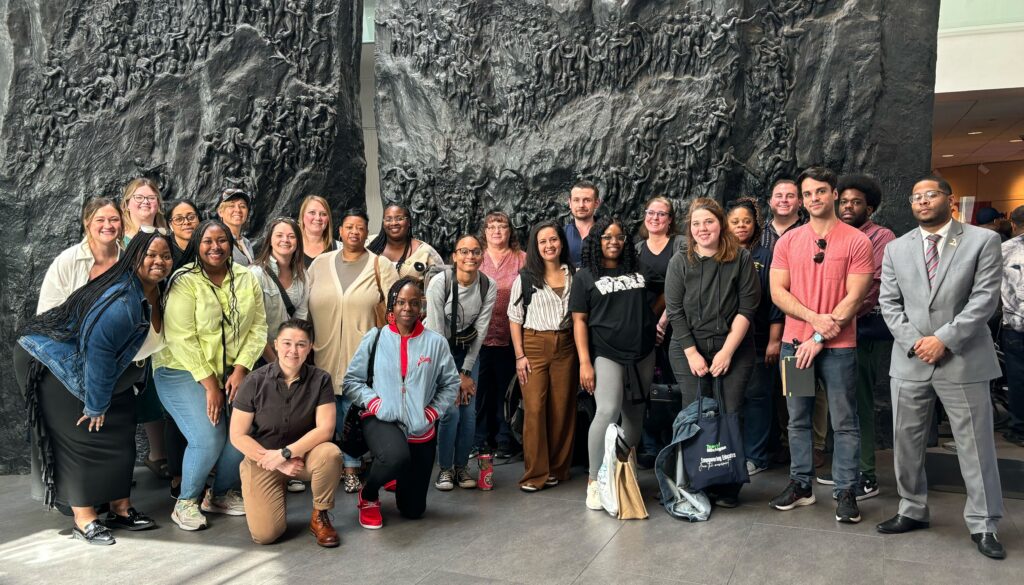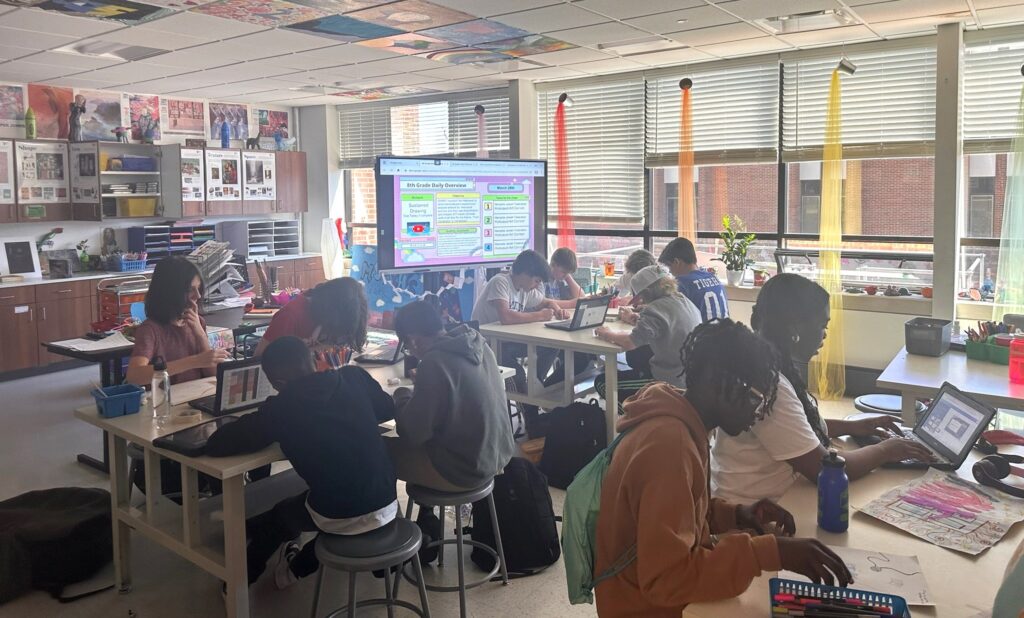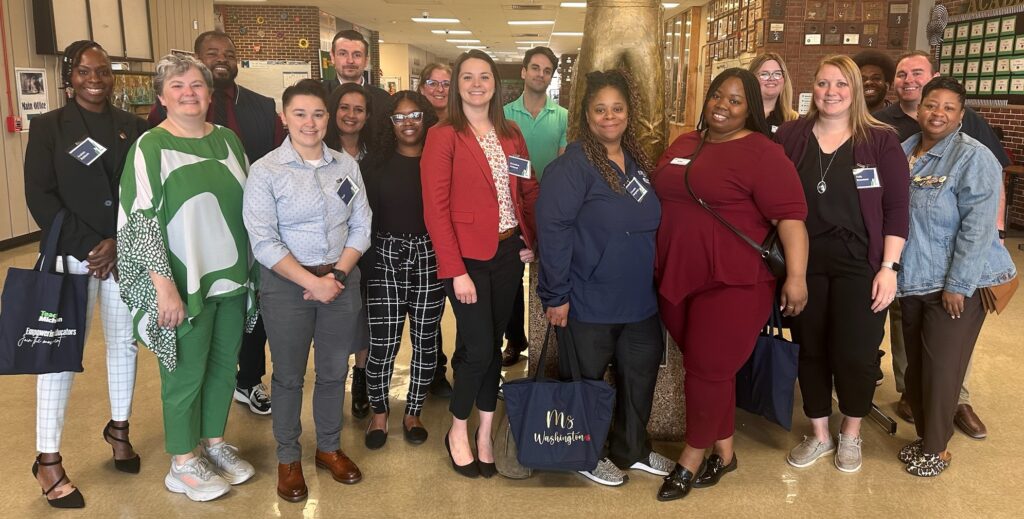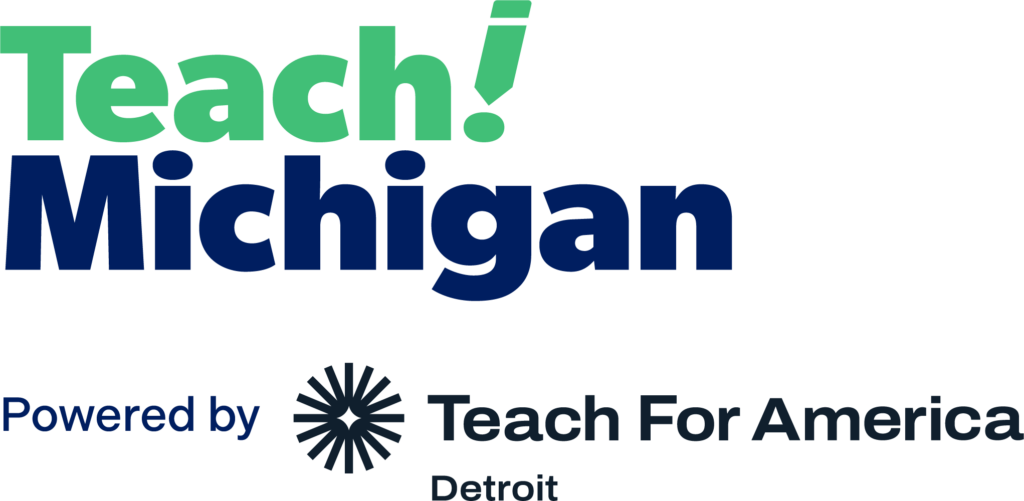From Detroit to Memphis: School Visiting Tour Reinvigorates Local Educators
Published on October 1, 2024 in Partners

United Way for Southeastern Michigan helps fund Teach For America (TFA) Detroit. Their TeachMichigan initiative invests in high-impact educators so that students from under-resourced households can reach key academic milestones. TeachMichigan developed more than 600 educators who reached over 100,000 students across 6 regions and 12 districts–including southeastern Michigan.
When educators walk into a successful classroom, they walk away with new ideas. The TeachMichigan fellows who traveled to Memphis on a school-visiting tour came home with more than tips. They found connection, inspiration and a rekindled passion to motivate their students to thrive.
“I really came back from the experience reinvigorated,” said Ryan Thomas, a veteran administrator and counselor at Detroit’s University Prep Art and Design School. “Being able to see different spaces and connect with those different educators is just vastly beneficial.”
Since the COVID-19 pandemic, educators are challenged with supporting students who are behind academically and reeling socially from the turmoil of recent years. Many schools report ongoing issues with low morale among educators. This TeachMichigan trip gave 17 fellows the chance to arrive in another city and see though the scenery might be different, the mission is the same.
Jasleen Singh, 12-year educator and chemistry and psychology teacher at Detroit’s University Preparatory Academy High School, said the chorus of complaints she heard from colleagues at school last year started to turn her off teaching.
“I was listening to the wrong people,” said Jasleen. “Flying to another city with educators who share enthusiasm to meet the challenges of the moment— it was an antidote to the negativity of the teacher’s lounge.”
PRAISE AND PROGRESS
“Students just want to do well. If they are seen and told they’re doing a really good job, they want to keep doing it.” — Jasleen Singh
As a high school teacher, Jasleen didn’t think she’d get much out of visiting a boys-only middle school, but she found the school’s practice of celebrating success very powerful. At Grizzlies Prep, the school mission was everywhere, and students were holding each other accountable.
“We would go see what each student cohort was accomplishing with behavior, grades or helping each other,” Jasleen said. “There was learning happening in every room and that’s not something I’m used to seeing when I go to a middle school.”
Inspired, Jasleen changed her classroom’s “shoutout” wall to celebrate the daily wins, big and small, that she witnesses in her classroom. This approach was so successful, her students started using it when they saw their classmates do something that warranted praise.
“Students just want to do well,” Jasleen said. “If they are seen and told they’re doing a really good job, they want to keep doing it.”
At Memphis College Preparatory Elementary School, teachers are transparent with student data, decking the walls of the school with signs tracking student progress, test scores and behavioral measures. After returning, Adrian also started looking to publicly share her school’s progress on a variety of goals with students, parents, and educators.
“Once you start displaying stuff across the board, everybody is involved,” Adrian said. “Teachers and students respond well, saying “Oh, everybody is looking at us, so I better step it up a little bit.”

TRUSTING STUDENTS TO LEAD
Cresandra Washington-Montgomery, English teacher at Detroit’s Denby High School, liked the rigorous subject matter she saw in a Grizzlies classroom. The seventh-grade students were reading Shakespeare, engaging with the material, and asking questions. It made her realize that she had been holding her own students back.
“I did almost baby them a little bit,” said Cresandra. “If these students can do it and they’re only in seventh grade, my students can do it in tenth grade.”
As soon as she returned from Memphis, Cresandra raised the bar. Cresandra started pushing her students to confront more difficult questions in books, such as matters relating to race and gender.
Jayla had a similar experience when she noticed students had more freedom to work together without constant surveillance from teachers. When she got home, Jayla made a deliberate effort to empower her students to work independently.
“I have been trying to do better with letting go of control and trusting that my students can handle themselves,” she said. “If I give them work to do, I don’t have to micromanage them to make sure it’s being done.”
Since then, Jayla’s students have responded well to that trust, seeing it as the privilege that it is.
EMPOWERING WITH OPPORTUNITY

At University Prep Art and Design in Detroit, students have access to college classes through the dual enrollment program with Detroit’s College for Creative Studies. A visit to Memphis University School, however, showed Ryan how much more his students could benefit from their school’s relationship with a college.
“The program goes far beyond dual enrollment,” Ryan said. “They’re literally doing this on a school-wide scale.”
Memphis’ University School students can take classes from university professors without leaving their campus. Back in Detroit, Ryan began discussions at his school about ways to integrate middle and high school classes with the College for Creative Studies.
“That was really motivating me to tap into something similar to give students more exposure to higher-level courses, especially when it comes to art,” Ryan said. “What would it take to begin something like that, where students can have exposure, and get tangible, hands-on experience that can really benefit them?”
POPPING THE BUBBLE
We’re in this profession to learn and grow from each other. We teach students, but we’re still learners.” — Cresandra Washington-Montgomery
All the educators say they brought home lessons that they could implement in their own classrooms, but what was most impactful was the time with their fellow Michigan educators, joining together for meals and touring together.
“Visiting schools in Detroit would not have had the same power because everyone is still connected to whatever else they need to do that day,” Thomas said, “Truly being pulled away just allows groups to fully engage with what they’re experiencing and share that amongst each other.”
One of the best new ideas Cresandra brought home was from a fellow from West Michigan who brought a media and broadcasting class to his school— something she wants to do for her students.
“It was nice to actually see that they are going through the same things I’m going through,” Cresandra said.
Cresandra and many others spend most of their days in a classroom, surrounded by students, living in a bubble that’s hard to escape.
“We definitely need to look outside our bubbles,” she said. “We’re in this profession to learn and grow from each other. We teach students, but we’re still learners.”
